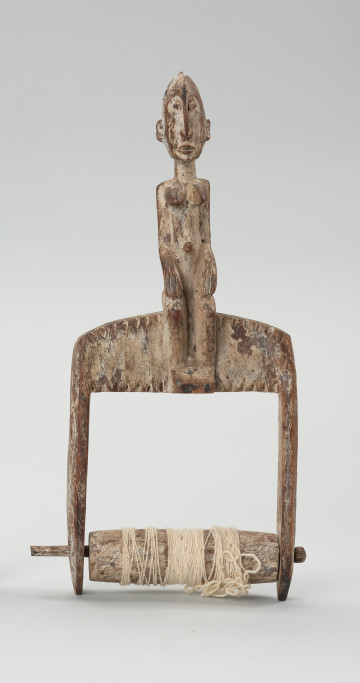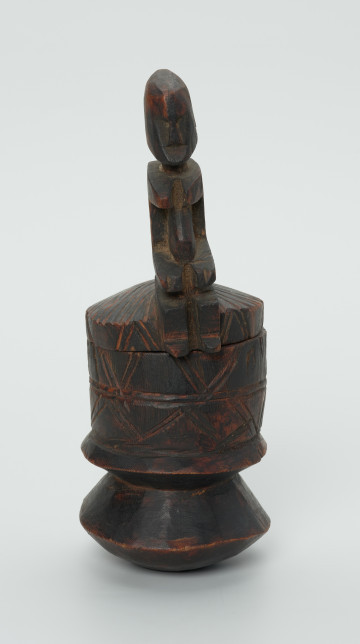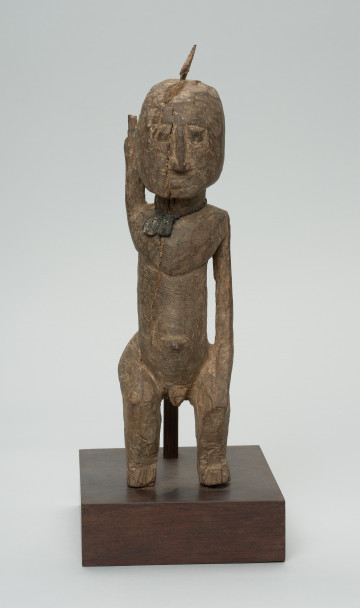
Handle with spool for weaving workshop
między 1951 — 1989
National Museum in Szczecin
Part of the collection: Collection of Dogonian art
Weaving has a long and rich tradition in the area inhabited by the Dogon. The oldest relics connected with the production of textiles date back to 800-1100 and are ascribed to the Tellem culture - people who inhabited the Bandiagara Escarpment long before the arrival of the Dogon. Thread-making tools such as spinners and fragments of woven clothing preserved in the burial sites of the Tellem testify to their great skill as manufacturers. Based on the findings, it is known that the Tellem constructed and used weaving workshops equipped with several weaving machines (contemporary the Dogon have only two) and prepared the warp from different coloured threads.According to mythology, the Dogon owe the cotton threads and the skill of weaving to one of their first mythical ancestors - Nommo. Cotton threads came out of his mouth, some of them stuck to his upper teeth and others to his jaw. Nommo opened and closed his mouth, spit out the threads, and his split tongue spun the thread of weft. In this way, the first fabric was created. Evidence of this event can be found in the term for weaving in the Dogon language - tie, which at the same time means word, passing through the teeth like the threads forming the first fabric. In the Dogon, as in other West African peoples, weaving is the domain of men. Women merely prepare the cotton threads later used by their husbands. The Dogon use a horizontal 2-needle workshop, which allows for long and narrow strips of fabric. The only ornately carved element of the weaving workshop is the spool holder located at the eye level of the weaver. The weaver himself orders the making of the handle, often imposing at once the design with which it will be decorated, usually with images of ancestors.
Ewa Prądzyńska
Author / creator
Dimensions
cały obiekt: height: 19 cm, width: 6,9 cm
Creation time / dating
Creation / finding place
Identification number
Location / status

między 1951 — 1989
National Museum in Szczecin

między 1972 — 1973
National Museum in Szczecin

między 1951 — 2000
National Museum in Szczecin
DISCOVER this TOPIC
Museum of King Jan III's Palace at Wilanów
DISCOVER this PATH
Educational path